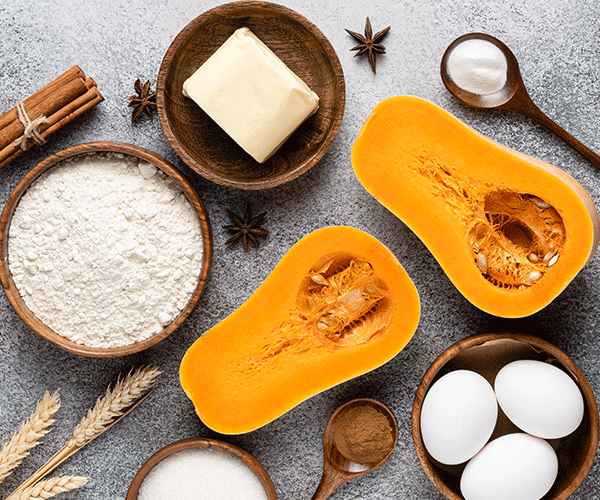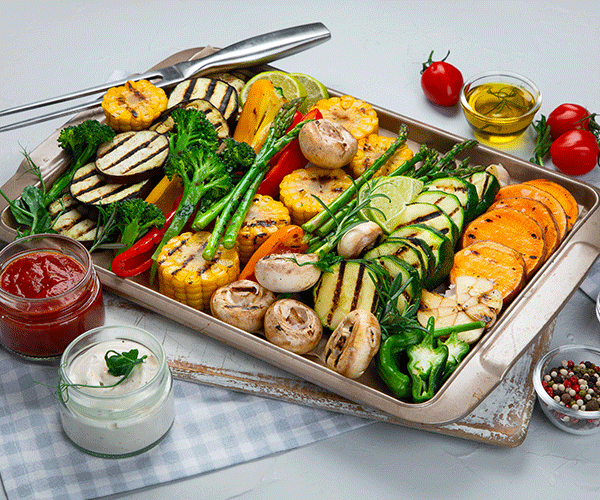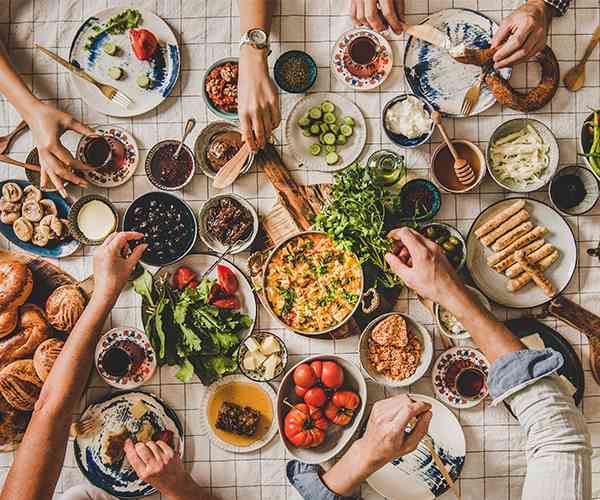Mar 18, 2021
By Stacey Stein
With international travel on hold and festivities limited to our families, this Easter is the perfect time to try something new by thinking global when planning our holiday meal.
“This year our celebrations look different – we’re not having big family gatherings, so trying foods from different cultures is a way to add some fun into your holiday,” says registered dietitian Shannon Crocker.
Whatever you plan for the Easter meal with your bubble, flexibility is key. You may not be able to replicate a new recipe down to the last ingredient, so think of substitutions and using what you have on hand. “There’s no one right way to cook, eat or celebrate,” says Crocker.
To help inspire you, here’s a look at three countries’ culinary Easter traditions, along with some tips and tricks for modifications.
Britain
The British celebrate Easter with common holiday traditions such as egg hunts and egg painting, but they also have unique customs, which in some cases are associated with food.
Hot cross buns, a long-standing British Easter tradition, are typically enjoyed with a cup of tea. You can try your own twist on these buttery, raisin-filled treats by making sticky butter cinnamon buns (consider adding raisins into the dough.) Butter is a star ingredient – try substituting Gay Lea’s Unsalted Grass-Fed butter for the unsalted variety used in the recipe.
With a rich history dating back to medieval times, simnel cake is another British Easter tradition. A light fruitcake packed with dried fruit and spices, it’s topped with a marzipan decoration that traditionally appears as 11 marzipan balls.
Using this cranberry almond shortbread cookie recipe as your foundation, Crocker suggests making a cookie version of the traditional British holiday cake. Simply replace the dried cranberries with dried mixed fruit, toss in some candied peel, and add a generous sprinkling of nutmeg and cinnamon. You can also swap Grass-Fed butter for unsalted butter. As your final step, make a cookie sandwich by slathering some marzipan in between two of your “simnel” cookies and voilà – your simnel shortbread cookie creation is complete!
Another popular Easter staple in Britain is spring lamb, which is usually served as either a stuffed roast leg of lamb or a boned leg stuffed with fresh herbs. Try your own spin on this holiday favourite by making this Mediterranean mozzarella stuffed lamb, perfect for a small holiday meal (replace the Black River mozzarella with Salerno shredded mozzarella). This flavourful dish features a stuffing made with mozzarella cheese, sun-dried tomatoes and panko breadcrumbs (try substituting Gay Lea’s Sea-Salted butter for the regular salted butter in the recipe.)
Italy
Widely considered the most important religious celebration of the year, Easter in Italy is marked with several special dishes. Lamb features prominently, and different regions in the country have their own unique take on how to prepare it.
In Italy’s Lazio region, which includes the city of Rome, crispy lamb ribs – prepared with olive oil, garlic and rosemary – are popular. In the regions of Veneto in the north and Campania in the south, the Easter meal features roast leg of lamb with potatoes.
Lamb stew studded with veggies is popular in the southern regions of Puglia and Basilicata. Crocker recommends making your own dupe using this recipe – simply swap out lamb for the beef, omit the sour cream topping and try using Gay Lea’s Garlic Parsley butter instead of traditional salted butter. Italians living in Trentino – in the far north of the country – eat meatballs comprised of ground lamb meat, parsley, shallots and rosemary. Make your own version using this recipe subbing lamb for the beef. Brush the meatballs with Gay Lea’s Garlic Parsley butter after cooking, and serve with tomato sauce as a dip.
Torta Pasqualina – a savoury tart made up of layers of phyllo dough, stuffed with swiss chard and eggs, and seasoned with herbs – is another traditional Italian Easter dish. This spanakopita recipe is a close replica. Crocker suggests replacing the spinach with chard and using Salerno Ricotta instead of cottage cheese – you’ll end up with a dish that resembles the real thing. Tip: try replacing the butter prints with Gay Lea’s Organic Salted butter.
After the Easter meal, Italians enjoy a sweet finish by eating Pastiera Napoletana, a traditional cake hailing from the southern port city of Naples, made with ricotta cheese, candied peel and orange flower water. Using this cheesecake recipe as a base, make your own variation of the traditional Italian cake by using Salerno Ricotta instead of smooth cottage cheese, and adding in some cooked wheat berries (a half cup to a full cup.) You can also try using Gay Lea’s Grass-Fed salted butter instead the regular salted variety called for in the recipe.
Russia
Russians celebrate Easter with a special meal featuring unique dishes. Especially popular is pashka, a dessert made from curd cheese (or cottage cheese), butter, dried fruit, and other ingredients. You can make a mock pashka with a few simple modifications to this sour cream berry cake recipe. Crocker recommends adding in raisins, garnishing only with raspberries, and replacing the regular salted butter with Gay Lea’s Organic Salted butter.
Kulich is a classic sweet bread commonly eaten in Russia and neighbouring countries on Easter day. Packed with spices, dried fruit and citrus peel, this tall, cylinder-shaped bread is drizzled with a sugary glaze and made with simple ingredients like milk, eggs, sugar, and butter. If you’re looking for a close alternative, you can try making this muffin recipe – simply omit the blueberries and bake in mini cake pans to try replicating the shape of traditional Kulich. You can also swap Gay Lea’s Grass-Fed Salted butter for the regular salted butter.
The final word
With so many Easter dishes to choose from – both tried and true North American favourites and unique national dishes from other countries – the options for making this Easter one to remember are endless. Perhaps you’ll opt to prepare a few family favourites, mixing things up by adding in a new dish or two from a different culture. Or maybe you’ll take your family on a culinary globetrotting adventure, trying several Easter dishes from different countries. Whatever you decide, what’s most important is celebrating this springtime holiday with your family while enjoying a delicious meal together.

Oct 5, 2021
By Stacey Stein - What comes to mind when you think of Thanksgiving? While many of us associate it with a sumptuous turkey dinner shared with family or friends, the holiday is meant to celebrate the fall harvest. And what better way to give thanks for autumn’s bounty than by showcasing local

May 31, 2021
By Stacey Stein - Summer in Canada is associated with time-honoured traditions like camping in the great outdoors, relaxing lakeside at a cottage, and enjoying backyard barbecues, reveling in the warm weather and longer days. - With Father’s Day and Canada Day around the corner, many of

Apr 22, 2021
By Stacey Stein - Most mothers have been putting in loads of overtime this past year, earning a well-deserved bonus. Which is why those closest to Mom might want to consider kicking things up a notch this Mother’s Day. While a spa day may have to wait until next year, a thoughtfully planned M

Mar 18, 2021
By Stacey Stein - With international travel on hold and festivities limited to our families, this Easter is the perfect time to try something new by thinking global when planning our holiday meal. - “This year our celebrations look different – we’re not having big family gatherings,